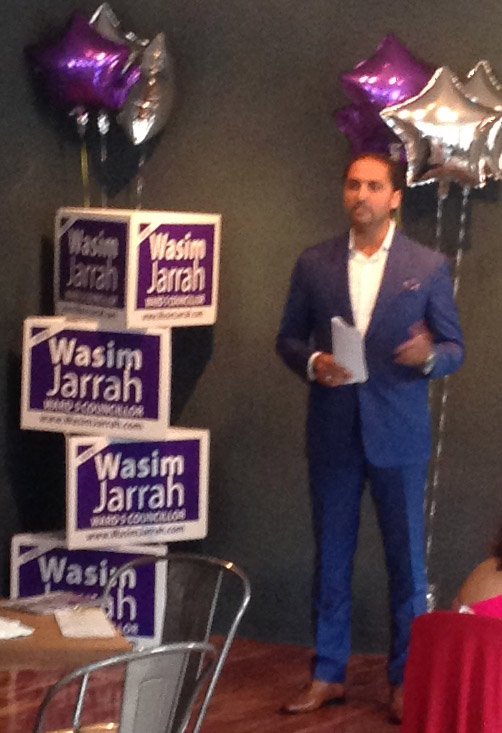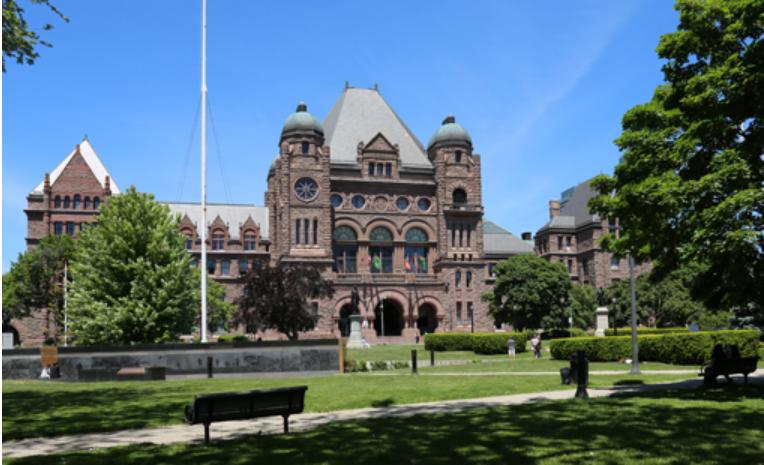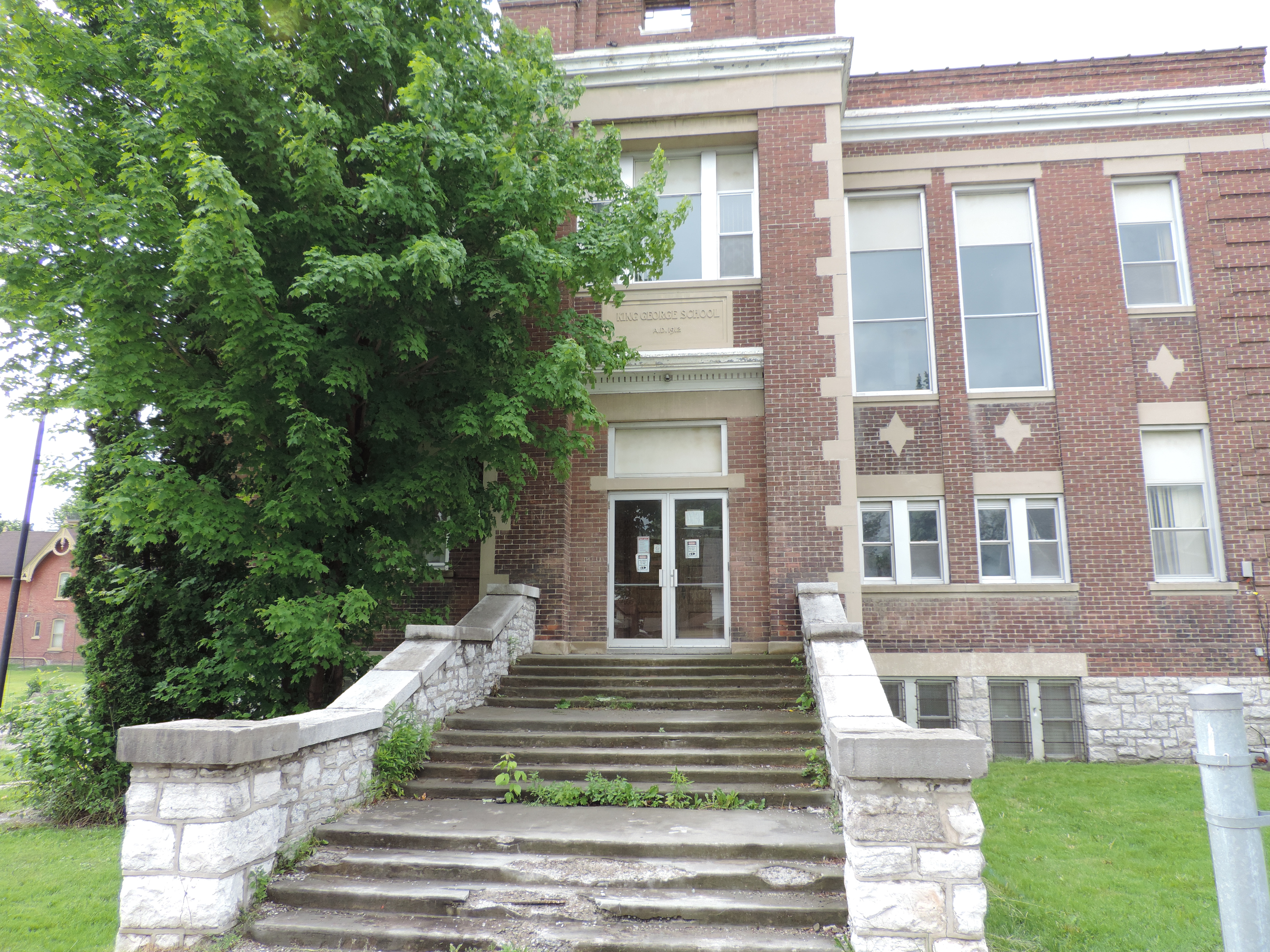- Details
- Written by Gordon Prentice
Brad Rogers from Groundswell - the man with a finger in every planning pie in Newmarket - will be briefing members of the Newmarket Heritage Advisory Committee on the proposed development at King George School in Park Avenue.
The old school lies in the heart of Ward 5 where a by-election is to be held on 17 October 2016.
The meeting, which is open to the public, will be held at 7pm on Tuesday 13 September 2016 in the Mulock Room at the Town's HQ, 395 Mulock Drive.
This email address is being protected from spambots. You need JavaScript enabled to view it.
- Details
- Written by Gordon Prentice
I have been reflecting on Wasim Jarrah’s campaign launch yesterday afternoon upstairs at the Hungry Brew Hops in Main Street South. 
In the spirit of the times I want to be upbeat and positive. After all, Wasim is the candidate who believes in “sensible solutions”.
It was a jolly enough affair and everyone was very nice but there was one missing and rather vital ingredient – a platform.
As I am listening to his speech I hear Wasim wants to cut red tape. There’s too much bureaucracy. The Town must become more business friendly. He wants respect for taxpayers. He acknowledges the Town is a decent enough place to live with good services but, he says, we can always do better. He is painting a picture with very broad brush strokes and very little in the way of detail.
The words “Clock Tower” do not pass his lips.
I hear no clarion call.
Instead, Wasim tells us:
“I don’t want to set out a platform until I have consulted with people.”
Oh dear!
We are getting the dance of the seven veils when everything will presumably be revealed on Tuesday 4 October 2016. This is the day of the candidates’ debate hosted by the Chamber of Commerce.
Drip-feeding solutions
He’s gotta come up with the answers by then. He can’t tell the audience at the Newmarket Theatre he is reserving his position on an issue because he hasn’t consulted on it yet.
To be fair, Wasim must have consulted people on traffic and safety problems because he has produced a leaflet setting out his plan of sensible solutions:
Install passive speed deterrents such as painted stone intersection crossings or soft strips.
Install actual speed warning signs
Install digital speed monitors to alert drivers to their speed
Explore radar cameras and reinvest proceeds back into the ward
Investigate bike lanes on arterial routes.
There is rather too much “exploring and investigating” for my taste. But what, if anything, are we going to do about traffic volumes? Should some streets be bus only or bus and auto only? Or, indeed, pedestrian only? How do we keep huge trucks off residential streets?
Is there a sensible solution to the grid-lock that is threatening to throttle our Town?
When Wasim consults on that one, I would like to hear the answer.
This email address is being protected from spambots. You need JavaScript enabled to view it.
- Details
- Written by Gordon Prentice
Chris Ballard’s private members bill is dead.
Ballard’s Bill would have mandated the election at large of the Chair of York Region. That would be around 750, 000 voters. At present, the Chair, who has important formal and informal powers, is indirectly elected by 21 members of York Regional Council. 
The Bill could have been passed in the last session if there had been a will to do so. The Bill completed its Committee stage on 2 March 2016 and there was widespread cross party agreement that the Bill should become law. Not a single witness appeared before the Bill Committee to argue for the status quo. But the Government business managers, for whatever reason, did not timetable the Bill’s remaining stages and the Bill fell with prorogation on 8 September 2016.
All is not lost
However, the Government can choose to bring in its own Bill to force direct election on the three regional councils that currently cling to indirect election. Tomorrow, in the speech from the Throne we may hear something about bringing more democracy to the regional tier. I hope so. If not, we have all been royally marched up to the top of the hill and royally marched down again.
If nothing happens, Newmarket’s Mayor, Tony Van Bynen, for one, will be pleased. Safe in his handsomely paid sinecure, he brazenly voted against the direct election of the Regional Chair (and against the clearly expressed views of Newmarket Council) when the matter came up for consideration by the Regional Council in February 2016.
When Ballard was promoted into the Government as the Minister for Housing it was clear then that his Private Members’ Bill 42 would die on the Order Paper at the end of the session unless he transferred sponsorship to a backbench MPP. That didn’t happen. The alternative, then as now, is for the Government to take up the issue and bring in its own Bill.
Resurrect the Bill now
But, if this is to happen, the Bill must be introduced quickly. There are big unresolved issues that need to be addressed such as the cost of running for election in a Region-wide constituency with a super-sized electorate of 750,000. The next Regional Council election is in 2018. In terms of the electoral timetable, this is just around the corner.
If Kathleen Wynne wants a more democratic Regional tier of Government then she should resurrect Ballard’s Bill and make it her own – a Government Bill.
To paraphrase.
The Bill is dead. Long live the Bill!
This email address is being protected from spambots. You need JavaScript enabled to view it.
- Details
- Written by Gordon Prentice
It is 10am on Friday morning and I am sitting in a comfortable chair on the verandah of a lovely heritage home in the old downtown. A little dog I met for the first time moments before is sprawled out at my feet, nestled into my red shoes, as if we are old friends.
I find myself chatting amicably to two people. Tracee and her close friend and campaign manager, Julie Cochrane, who is President of a group of local artists.
Tag-team
They act like a tag-team. Tracee taking some questions and Julie others. They seem to be in it together, in a sisterly kind of way.
Tracee is at pains to explain she is Newmarket through and through. She grew up here. Built a successful business in Town and knows a lot of people. She comes across as an open and engaging “people person”.
For years, I have been looking at local politics from the outside, trying to understand the power plays and relationships in municipal politics. But until she threw her hat into the ring I had never heard of Tracee Chambers. Now she is running for office, I want to know if she was, for example, aware of the two Clock Tower petitions, for and against? And why she chose not to sign one or the other? The Clock Tower has been a big issue for years.
She winces slightly, acknowledging she is coming from a standing start but she says she is getting up to speed on all the issues. She has just posted on her website her "five areas of focus". She has Ian Proundfoot (ex ERA newspaper) on her team and is supported by many others. She has been briefed by the Town’s CAO, Bob Shelton.
Clock Tower
On the Clock Tower, seven storeys is too high. She has been out canvassing views on Main Street. If the current height cap is breached then some other business owners would want to follow suit. And before you know it, the old downtown would have changed forever. The very thing that now draws people to the old downtown (the heritage and human scale) would be gone.
I am now talking about Bob Forrest and the OMB and how the Clock Tower project can only proceed if Bob gets Town owned land for his underground car park. Yes, says Tracee. Bob Shelton told her the Town doesn’t need to sell the land to the developer, it can be made available using some other arrangement/agreement.
We now move on to the other big planning issue downtown, the King George School development. (The application has now gone into the Town’s Planning Department.) Julie tells me the plans will shortly be on public display in the old School and people can makes up their minds about it then. The school will be an integral part of the development. She senses that people are comfortable with what is likely to emerge – townhouses and the heritage school converted to condos.
Crowded field
Now I tip-toe into asking about the election campaign itself. With a crowded field of 8 hopefuls it is quite possible that the successful candidate could win with 30% or even 20% of the total vote. She nods in agreement.
I learn that Bob Kwapis was seen as the candidate favoured by the powers-that-be but now, with so many candidates in the race, they are just waiting to see how the cards fall.
She tells me that by nature and instinct she searches for compromises that bring people together. As a councillor, she has only one vote and to get anything done she would need the support of others.
More women needed on Council
Julie chips in. Newmarket needs more women on Council. They bring a different perspective. She laughs, three is good but four would be better!
I mention election signs that will be going up around the Ward from 17 September. Are we going to see a blaze of Tracee Chambers signs? Julie tells me with sweet innocence how many election signs they’ve had printed. I decide to keep this information to myself though I shall be counting how many go up.
As I get up to leave, I am given butter tarts (from the Maid’s Kitchen) to take home with me. Julie goes in to the house and emerges with a beautiful oil painting of William Lyon Mackenzie, painted by her husband. I mention that I recently visited the great man’s house in Toronto which is still standing while those on either side have long been demolished. There is a moral there.
Now I am walking away from the house I hear Tracee call after me:
“Don’t forget my campaign launch tomorrow!”
“Wear your funky shoes!”
This email address is being protected from spambots. You need JavaScript enabled to view it.
- Details
- Written by Gordon Prentice
More development is promised in the heart of Ward 5 – Newmarket’s cherished old downtown.
I see that Neil and Chrisula Selfe (aka 1569121 Ontario Limited) sold the crumbling King George School to 400 Park Avenue Inc for $3, 500,000 on 12 August 2016.
The Selfes bought the property from the York Region School Board on 15 November 2011 for $1,275,000. Since then the unoccupied building has been gently rotting away.
Curiously, the sellers (the Selfes) have a charge on the property for $2,500,000. We shall learn more of this later.
400 Park Avenue Inc is believed to be linked to the Rose Corporation.
The old school was designated by the Town on 20 October 1986 as a property of architectural and historical value. It cannot be demolished but it can be “re-purposed” as part of a wider redevelopment of the site.
More to follow.
This email address is being protected from spambots. You need JavaScript enabled to view it.
The Town gave reasons for the designation in 1986:
The property known as King George Public School at 400 Park Avenue is worthy of designation for architectural and historical reasons. King George School, as the Town’s oldest functioning public school building, is a well preserved example of early twentieth century public school architecture. It was constructed in 1912 to 1913 by Mr McIntosh, contractor, to the plans and specifications of O. E. Trench, architect. This red brick, two storey school, which rests on a limestone block foundation, was built on the site of an earlier school, both of which were designed to serve the primary grades. Projecting two storey entrances, with exterior stairways, sided in limestone blocks to match the foundation, are on each of the Victoria and Park facades. The entrance bays have concrete quoins and ornamental projections above the flat roof of the building. The top of the walls of this square building incorporate decorative moulding and brick banding. The corners of the building have quoins simulated in brick. Large windows, surmounted by concrete lintels, illuminate the six classrooms in this school.
Page 198 of 286
